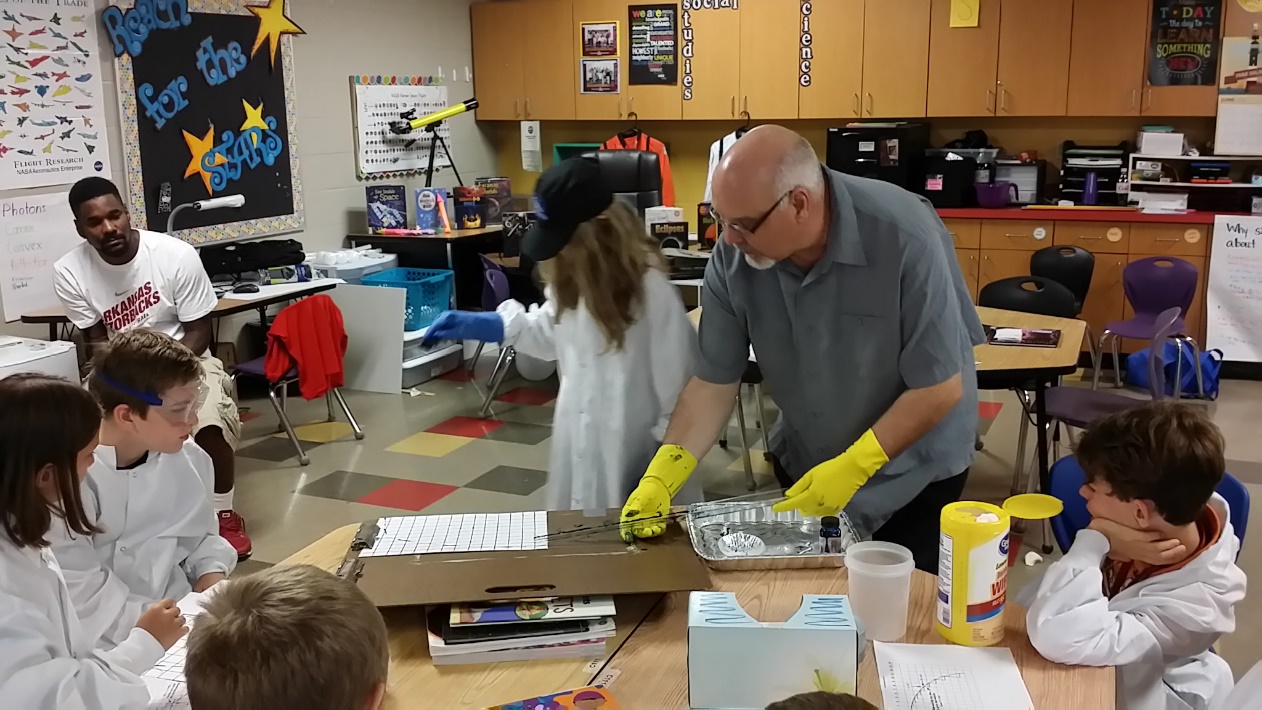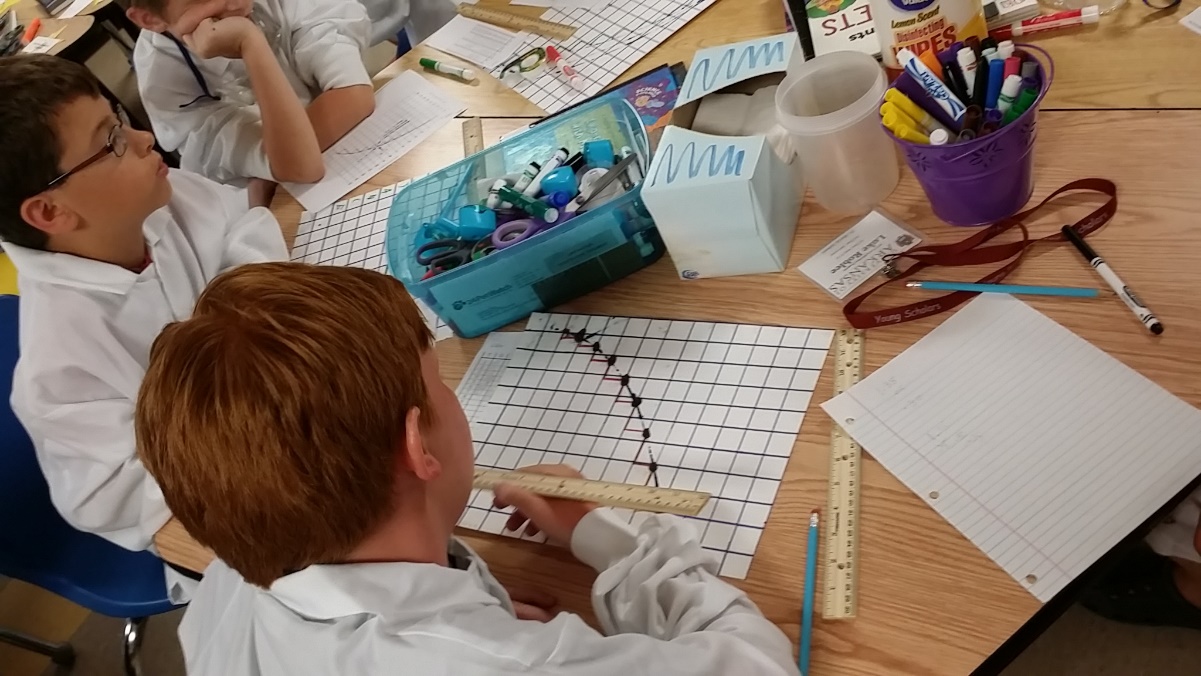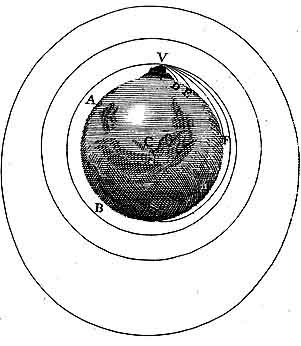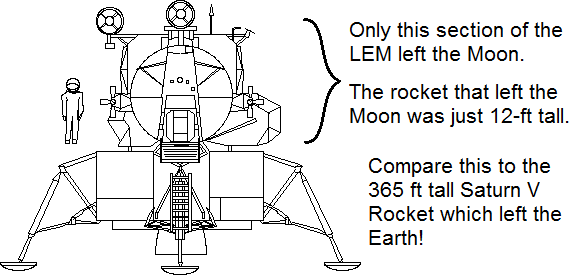6.3: Galileo’s Falling Bodies
( \newcommand{\kernel}{\mathrm{null}\,}\)
One of the first biographies of Galileo describes his famous experiment, dropping iron balls of different weights from the top of the famous leaning tower of Pisa. Galileo sought to prove that all objects fell at the same speed, regardless of their weight. You will recall from Activity #14 that the pendulums were also unaffected by their weight; the only way to change the timed length of a pendulum’s swing was to change the length of the string that held it.
Aristotle’s scientific model stated that things fell to Earth because the ‘wanted to reach their natural place’, and that the heavier an object was, the faster it would fall. Although it is simplicity itself to do the experiment that Galileo did, Aristotle apparently never did it. Aristotle’s fame was such that no one seriously challenged his assertions for over 2,000 years. Galileo’s experiment shows us the utility of gathering accurate observational data and comparing it to the predictions of scientific models. This is the very mechanism through which science corrects its own errors.
Science and Engineering Practices
- Asking questions and defining problems.
- Planning and carrying out investigations.
- Analyzing and interpreting data.
- Using mathematics.
- Argument from evidence
Crosscutting Concepts
- Cause and effect.
- Next Generation Science Standards.
- Forces and interactions (K-5, 6-8, 9-12).
- Gravitation and orbits (6-8, 9-12).
For the Educator
Facts you need to know
- All objects on Earth fall at the same rate. This rate is called the acceleration of gravity, on Earth this rate is 9.81 m/sec2. We use the symbol g to represent this value.
- Acceleration means that the velocity at which an object moves is changing is a steady way.
a. Acceleration can be either positive (speeding up) or negative (slowing down.)
b. Earth’s acceleration is 9.81 m/sec2. This means you add almost 10 m/s to your speed every second you spend falling. After 3 seconds falling, you are moving over 29 m/s, that’s almost 66 mph!
Teaching and Pedagogy
This experiment, like the pendulum in activity #14, shows us that inertia and gravity are closely linked and balance out exactly whenever an object is falling freely toward the ground. Our old friend Aristotle famously said that heavy objects fall because they wantto reach the center of the Earth.
Aristotle hypothesized that a heavier object would ‘want to fall more’, and so it would fall faster and strike the ground first if dropped with a lighter object. Aristotle was so very well respected as a genius and a scientist that his ideas were not questioned for almost 2000 years! “Aristotle said it, so I believe it!” was the attitude of learned men and women for many centuries.
Galileo was one of the first people to actively confront the established view and test these ideas with experiments, in fact he wrote an entire book of do-it-yourself experiments that allowed people to prove for themselves that Aristotle was wrong about many things, including gravity and the design of the solar system.
Challenging the ideas of Aristotle was highly unpopular; Galileo was imprisoned for his bold, scientific explorations and spent the last 12 years of his life in custody. If we teach children anything about science with these experiments, it must be that there are no sacred traditions in science. We can, and must, question everything by putting it to the experimental test. Those who say: “Don’t you believe?” or “Almost everyone agrees, why don’t you!?” are not being true to our scientific heritage!
Student Outcomes
What will the student discover?
- Gravity causes every object to fall at the same rate toward the center of the Earth.
- Air resistance can powerfully affect the rate at which a light weight or low density object falls.
What will your students learn about science?
- There a no sacred ideas in science. No matter who says something is true, no matter how long we have ‘known a fact’, it must stand up to experimental challenge.
- Gravity is a powerful and universal force. Gravitation affects everything, pulling it toward the center of mass (usually the center of a planet or star.)
- Gravity and inertia are closely linked. It is the precise match between gravity (the pulling force between two objects like the Earth and a rock) and inertia (the resistance to movement or force) that makes the constant acceleration of gravity a reality.
Conducting the Activity
Materials
- Flat board about 18 inches long (See Activity 14)
- Various rocks, from fingernail size to as big as a chicken egg. (any weighty object will do)
- A single sheet of paper crumpled loosely into a ball
- A feather or a dried leaf
Building the Galileo’s Freefall Model
This model is simply a flat board laid along the edge of a desk or table. The idea is that two or more objects can be tipped off the board at the same time and allowed to fall.
Exploring the Galileo’s Freefall Model
- Set your flat board along the edge of a table top.
- Place any two rocks (or other weighty objects) on the edge of the board
- Tip the board slowly and allow both objects to fall off. Ask students to watch to see which one hits the ground first?
- Try this with various combinations of weights, then try with a weight and a crumpled piece of paper or a dried leaf. (The rock will obviously hit the ground first.)
Discussion Questions
- How did Galileo prove Aristotle was incorrect?
- Answer Aristotle would have said that the heaviest objects always fall faster and hit the ground first.
- Which results would agree with Aristotle? Why do you think this happened?
- Answer The slowly falling leaf and rapidly falling rock would seem to support Aristotle’s viewpoint. In fact, it is the resistance of the air that slows the leaf down, the rock is much denser and is not affected as much. There is a famous NASA video showing Apollo 15 astronaut David Scott dropping a metal hammer and a falcon feather on the Moon; in the airless environment, the hammer and feather both fall together perfectly.
- What lesson about science does Galileo’s experiment teach us?
- Answer Question everything! No scientific theory is so famous or so honored that it should not be questioned. When a theory makes a prediction, we should gather data to see how that prediction holds up!
Supplemental Materials
Going Deeper
Galileo was known for challenging long held beliefs, primarily the ideas of Aristotle. Apart from exploring ideas about gravity, inertia, and friction, Galileo also challenged the idea that the Earth was fixed, or motionless in space.
Aristotle claimed that if a mountain was too big to be moved, then what force could possibly move the entire Earth? Aristotle also knew the approximate size of the Earth (24,000 mile circumference) and realized that the surface of the Earth must be moving approximately 1000 miles per hour if it spun on its axis once a day. Aristotle said such a great speed would cause huge hurricane winds – and since we don’t feel such winds, the Earth must be motionless.
How would you respond to Aristotle’s arguments? How did Galileo do so? Even if you cannot figure out how to counter Aristotle’s arguments, does that mean that he was correct about the Earth being fixed in space?
Being an Astronomer
Gravity controls the orbits of all satellites of the Earth, from the Moon down to the smallest scientific, weather, and communication satellites rocketed into orbit. The best time to see satellites is in the first 2 hours after sunset or the last two hours before dawn.
Go outside on a quiet and clear night and sit in a lawn chair so you can lean back and watch the sky comfortably; a dark place away from streetlights will be very helpful. As your eyes adapt to the dark, you may notice that there are some fainter stars which drift slowly across the sky.
Watch them carefully – if they are blinking, these are most likely airplanes high in the sky, flying from one city to another. If these drifting stars do not blink at all, then they are likely satellites moving silently across the sky as they travel in low Earth orbit!
Being a Scientist
Once you learn to spot satellites, you can use a simple ruler to judge their speed. Take a lawn chair out as you did before, but this time take a ruler marked in centimeters, along with some paper and pencil to record your findings. A parent or a partner will make the job much easier!
Once you spot a satellite moving across the sky, hold your ruler up at arm’s length and start measuring the satellite’s progress. When you begin measuring, tell your partner “Go!” and have them begin timing. Measure the satellite’s progress for 20-30 cm if you can, then tell your partner “Stop!” Record the time and distance travelled by the satellite.
With a ruler at arm’s length, 1 cm is approximately equal to 1 degree of arc. Divide the distance in degrees by the time in seconds to get the speed of the satellite. Because gravity’s force is stronger the closer that you get to the Earth, satellites which are in a lower orbit travel faster! See if you can rank your satellites from lowest to highest in orbit!
Following Up
You might get the impression from these activities that Aristotle’s ideas were all silly or ignorant – nothing could be further from the truth. See if you can research some of Aristotle’s ideas; what did he do to become so famous?
Activity 17: Packard’s Acceleration Ramp
We know that gravity makes everything fall to Earth; everyone has heard the old saying: “what goes up must come down!” But the question remains, how do we fall? When we jump off a diving board into a pool, there is the rush and then the splash, but what is happening to us as we fall? Why do asteroids strike us at such tremendous velocities, upwards of 30,000 miles per hour; how do such large objects get moving so fast? As we shall see, it is gravity which speeds us up as we fall – we call this speeding up: acceleration.
This activity is a simple one, we use a ramp to slow down the fall of a marble so that we can study it more easily. Galileo, and many other scientists and thinkers through the centuries have used ramps to study gravity. This apparatus was originally developed by John Packard, an American high school science teacher in the early 1900’s; you can recreate this simple device in your classroom and learn more about gravity!
The ideal gas law is easy to remember and apply in solving problems, as long as you get the proper values a
Science and Engineering Practices
- Developing and using models.
- Planning and carrying out investigations.
- Analyzing and interpreting data.
- Using mathematics.
- Argument from evidence.
Crosscutting Concepts.
- Cause and effect.
- Systems and system models.
Next Generation Science Standards
- Forces and interactions (K-5, 6-8, 9-12).
- Engineering and design (K-5, 6-8, 9-12).
- Gravitation and orbits (6-8, 9-12).
For the Educator
Facts you need to know
- Gravity is a steady and consistent force. Gravity pulls us steadily toward the Earth’s center, and just as it pulls the pendulum toward its center point, gravity also pulls the ball down the ramp.
- The horizontal motion of the ball does not affect its vertical motion down the ramp. Try it! If you release a second ball at the same time that the first ball leaves the ruler and let it roll straight down the ramp, both balls will reach the bottom at the same time!
- The curved path of the ball is the result of just two things:
a. The ball’s horizontal speed coming off of the ruler.
b. The angle of the ramp.
If you change either of these, you will change the shape of the curved path the ball takes. Try this – allow your students to play with the apparatus. Put a mark on the bottom edge of the ramp and see if they can adjust the path of the ball to hit it!
Teaching and Pedagogy
Both Galileo and Newton used ramps to study the effects of falling bodies, but Newton brought a much more mathematically sophisticated approach to the matter, employing algebra, graphing, and even the calculus which he developed entirely by himself. Ramps are useful in studying gravity because they allow us to slow everything down and more easily see what is happening.
In our activity, we use the horizontal marks on our graph to represent time. This works for us because the ramp is tilted in only one direction (the vertical); it is perfectly flat in the other direction (the horizontal). Because our ramp isn’t tilted from left to right, the ball’s horizontal speed is unchanged as it rolls across our ramp; the ball takes the same amount of time to cross each square of the graph from left to right!
Younger children may find this hard to grasp, but it is easy to demonstrate to them (and to yourself!) Place the ramp flat on the table and place a marble on it. Now lift any side of the ramp you wish – which way does the ball run? The ball runs downhill each time of course. Ask your students why the ball doesn’t run sideways when you raise one side of the ramp? The children will be quick to tell you that the ramp doesn’t tilt that way – exactly correct!
The curved line lets us see quite easily that the ball speeds up only in the downhill direction – and this is the acceleration of gravity at work! Newton went quite a bit farther of course, he related the acceleration in the fall of an apple to the acceleration causing the orbital path of the Moon to curve around the Earth instead of flying off into space!
Student Outcomes
What will the student discover?
- Gravity is a steady force that never changes. We can manage gravity’s effects with ramps and pendulums, but we can never change gravity itself.
- Gravitational acceleration is the steady increase in speed as gravity pulls on a falling object. Gravity accelerates things whether they fall freely toward the ground, or roll freely down a ramp or hill.
- Horizontal motion cannot effect gravity. Things fall or roll down ramps at the same rate no matter how fast or slow they move horizontally. Vertical and horizontal motion are independent.
What will your students learn about science?
- Once again we see that a simple model can reveal wonderful secrets of nature. Gravity has been studied since ancient times, and yet the Packard Apparatus was not developed until a high school teacher invented it in 1906.
- Wonderful mathematics lurk in the most surprising places. The curve traced out by the rolling ball is a parabolic curve. You may remember studying parabolas when you took algebra in high school, but you were likely not exposed to these curves in this simple and natural manner.
Conducting the Activity
Materials
- A hard, flat surface for a ramp, at least 24 inches square. A piece of Masonite works well for this, but even a tilted school desk will do in a pinch!
- A ruler with a groove down the middle. (Alternatively, you can use a 6-inch long piece of wooden corner protector.
- A large (25mm) marble or ball bearing. The marble should be relatively heavy, glass or metal balls work well, wooden or plastic balls will not.
- A foam stamp pad, well filled with ink. A thin kitchen sponge saturated with paint in a disposable food container can be substituted for this – but ink works better.
- 1 piece of very fine (200 grit or higher) sand paper (a common emery board works well for this!)
- A pair of rubber kitchen gloves or similar
- Construction paper, rulers, markers, masking tape
Building the Packard Gravity Ramp
- [Teacher] The marble or ball bearing must be sanded a bit to help it hold ink well. Take your emery board or sand paper and rub the entire surface of the marble vigorously while wearing your kitchen gloves. Do this over a sink or pan of water – the dust from sanding glass can be very abrasive! Rinse the marble occasionally as you sand, when the entire surface has lost its polish and is uniformly dull, you are done. Rinse and dry the marble completely.

- Use a ruler and draw a grid of ½-inch (1 cm) squares over the entire construction paper. Draw as neatly as you can for best results. If you have large format graph paper, feel free to use it here!
- Tape your construction paper graph to the ramp board and then prop one end up 4-5 inches with text books so that it is sturdy. You may wish to cover your table with newspaper before you do this activity – the inky marble can be a bit messy!
Exploring the Packard Gravity Ramp
- Use the ruler with the groove in it as a marble launcher. Allow the marble to roll down the launcher as shown. Practice a few times with a dry marble; ideally, the marble should start at the upper left corner of the ramp and roll off the bottom right corner – this will give you the best results.
- Once you have this down, put on a kitchen glove and rub the marble over the stamp pad until it is thoroughly covered in ink. Carefully set the ink-covered marble on the launcher and let it go. It should trace a neat, curved path across your graph paper. Allow the ink to dry completely before taking the graph paper off of the ramp. If the line is faint, use a marker or crayon to neatly trace over it to make it more visible.

- Notice that the curve becomes steeper as it moves from left to right across the graph. The steepness of the curve is an indication of velocity. As the ball rolls faster down the ramp, pulled ever faster by gravity, the curve becomes steeper.
- The curve is never flat. This tells us that gravity is relentless, speeding the ball ever faster down the ramp as it moves. This continuous speeding up is gravitational acceleration.
- The curve is also very smooth and regular. This tells us that gravity’s pull is steady and unchanging. If gravity were changing, we would see wobbles and irregularities in the curve. Because the curve is steady, we know that gravity is, too!
Discussion Questions
- What does acceleration mean to you?
- Answer Acceleration is the steady increase in speed any object experiences as it falls. We won’t worry about the mathematical description of acceleration here, it is enough for students to know about the increase in velocity due to gravity as something falls.
- How did you detect acceleration from your results?
- Answer The ball travels farther (in the vertical direction) for every unit of time. To go farther in the same time – you must be moving faster!
- What would happen if you changed the angle of the big ramp?
- Answer Steeper angles give you higher acceleration. Shallower angles give you lower acceleration.
- What would happen if you changed the angle of the little ramp at the top, but kept the big ramp unchanged?
- Answer The speed of the ball across the ramp would change – the acceleration down the ramp would not!
Supplemental Materials
Going Deeper
 Like the ball rolling down a ramp, satellites are continuously falling around the Earth. Isaac Newton was the first to realize this.
Like the ball rolling down a ramp, satellites are continuously falling around the Earth. Isaac Newton was the first to realize this.
Newton visualized a ball shot from a cannon on a hill at ever greater speeds. Newton realized that not only would the ball travel farther as the horizontal speed increased, he also realized that if the ball were moving fast enough, it would circle the entire Earth.
This was the first conception of a man-made satellite. Newton’s conception of a satellite launched by man was not realized for 300 years, yet in 1958 the Soviet Union launched Sputnik, the world’s first ‘artificial moon’.
The great speed required for a satellite to reach orbit is over 17,000 mph – that is more than 22 times the speed of sound!
Being an Astronomer
The escape speed for the Moon is much lower than that of the Earth – this too is due to gravity. The Moon has only 1% of Earth’s mass (Earth is 100x heavier). This low mass makes the Moon’s gravity about 1/6th that of the Earth’s, just over 5,300 mph.
 When you compare the escape speed of the Earth, over 25,000 mph, to that of the Moon, it becomes clear that it is easier to launch a rocket away from the Moon than it is to launch a rocket away from the Earth.
When you compare the escape speed of the Earth, over 25,000 mph, to that of the Moon, it becomes clear that it is easier to launch a rocket away from the Moon than it is to launch a rocket away from the Earth.
Being a Scientist
- Have students examine the graph they have made. Each line across the graph from left to right represents one tick of time. The vertical distance the ball has rolled down the ramp starts with zero at the top and is numbered down the page.
- Look at how far down the ramp the ball rolls for each tick of time. Have the students draw triangles as shown below to help them see this idea in action. What do they notice?
- If everything has worked properly, the students should notice that the vertical leg of the triangle gets larger each time because the ball continues to speed up as it rolls down the ramp. Congratulations, you’ve discovered acceleration!
Following Up
There are many excellent videos and documentaries about the journey from the Earth to the Moon. Find one of these and watch it with your class. The sense of history is as important in science as the sense of the future.


